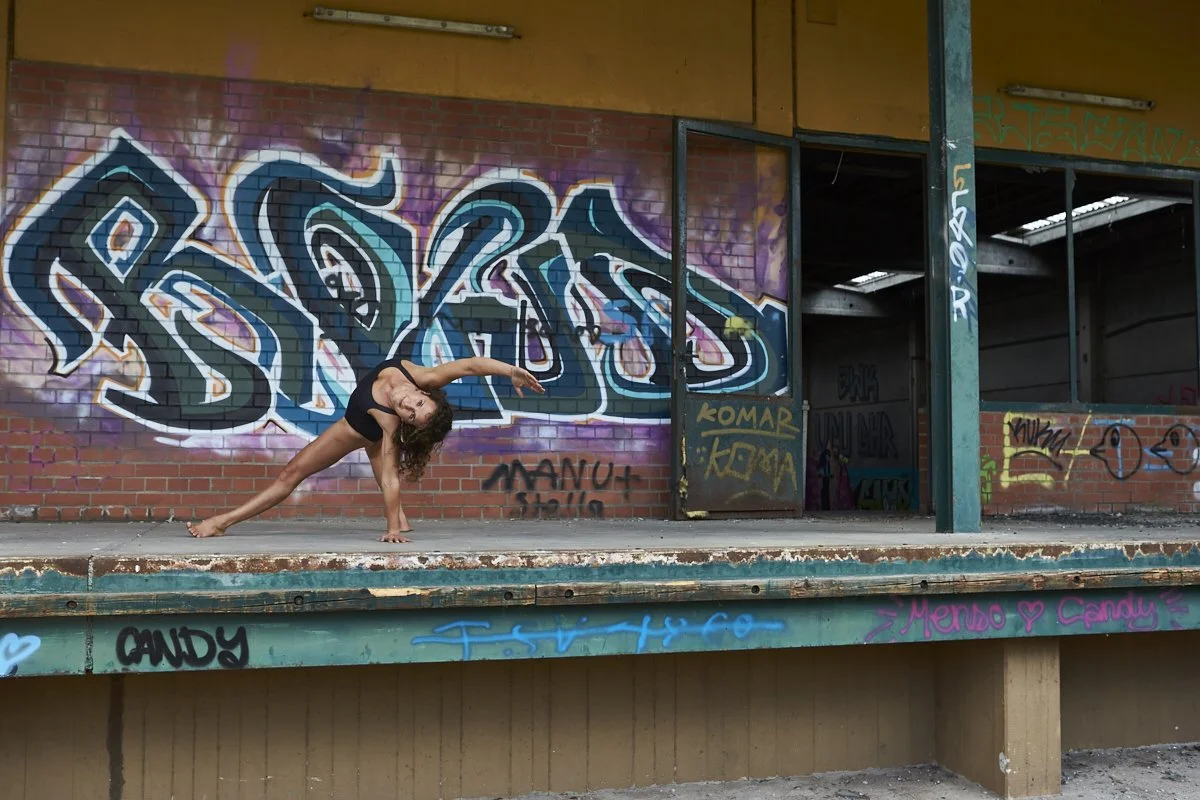Process overview
1. Describe your process. How did you choose your project? Why did you choose this method?
Brazilian Jiu Jitsu (BJJ) is something I train quite a lot, 3-4 times per week. In this martial art practice you spend most of the time on the ground, aiming to submit your opponent. Therefore, Floor Flow is perfect to incorporate into BJJ. It might help fighters to become more aware of using the floor, e.g. in order to escape from dangerous positions or also to find a dominant position for themselves. Positions such as half squats, hip bridges, side bridges, turtle (which is very similar to childs pose), quadrupedal positions, or shoulder rolls, which we used a lot for creating the loops, are also very common postures - even signature postures - in BJJ. Therefore, combining different BJJ-specific solo drills into a little loop was something I was curious about.
In my gym, as well as in a lot of other gyms I have been too, oddly there is hardly any connection between a move you do to warm-up the body and a fighting situation. For example, you would maybe do a few random primal movements, such as a gorilla hop, but people, and especially beginners, are not aware of the why. Most of the time, though, there is a very isolated old-school warm-up, such as a little bit of running or jumping-jacks or push-up variations. People in my gym joke about the super repetitive and tedious warm-up and just want to get it done and over with. And after the combat part you just pack up your things and go, without any stretching or anything else. I noticed that a lot of people get injured, I injured myself several times, and my recent injury is from BJJ too. BJJ-specific Floor Flow at the beginning or end of a class could help fighters to also lessen the potential for injuries and become more mobile and supple overall.
2. What felt good (or provided a healthy challenge) in creating this project?
It felt good to think about a way to bring some of the multiple benefits of floor flow I grew to enjoy into something I love to do anyway. The challenge was the audience: in my gym are literally only guys and they mostly use drills as a mere warm up before starting the fun part - the grappling or rolling. Due to a lot of Covid cases before the Easter holiday, which effected my little group of potential volunteers as well as myself, followed by a closure of the gym because of the Easter holidays, I ended up with a very difficult solo "client": my husband Philipp, also a BJJ practitioner, who is always very excited to try new ways of movement - NOT! Besides BJJ he does strength training and would never go to a yoga or dance class, mostly because he would feel too self-concious. Philipp was very reluctant to participate in my final project, to say the least... But luckily he finally agreed to be my guinea pig after all. And... I think he did it quite well. But he was so serious all the time...I decided to only keep him for 15 minutes.
3. What do you think your project offers to the viewer/ participant? (Tools for accessing a Flow State, more awareness of the floor, etc.)
Definitely more awareness of the floor and the ability to move legs or arms, lower body and upper body, seperately. In BJJ it is very common that your opponent is trapping or pinning either your lower or upper body - it is nearly impossible to do both at the same time. So, If your upper trunk is pinned, you can still use hips or legs and the other way around.
In addition, you can become more aware of how to use the floor to travel away from your opponent or moving closer toward him.
The floor flow elements will eventually increase overall mobility and lessen the potential for injuries. By moving slower they can breath deeper and more conciously.
If you would do something differently, what is it?
So many things - to name a few: I would mention the breath more, build the loop even slower, and talk less. Since Philipp is very new to flow, I felt like I had to explain a lot. We rehearsed the transition from supine to prone 2-3 times before we actually started the video, I couldn't do it in one go, and not because I had to instruct him in English, but because it was hard to find the appropriate words for someone who has no clue of what you want him to do. That showed me again how important it is to be very precise in your wording as an instructor. Furthermore I think it would be good to draw more connections to a BJJ situation, at least at the beginning.
5. What did you learn from this experience that you will apply to your own training or teaching?
Be precise in your language, give room for explanation, but also room for silence and for exploration. In a real class situation I would also put on some music (which I did before, but it disturbed the recording) and give way more opportunities for the participant to repeat the loop at his own pace.
2 C Summary
Floor Flow and BJJ go well together.
You become more aware of the floor and how to use it to your advantage, for example by pressing into the floor and away from the floor. Either in order to escape from your opponent or move yourself closer to him.
BJJ-specific Floor Flow will very likely improve your overall mobility, may help to lower the risk for injuries, and will maybe even teach you how to draw connections to use the different solo drills wiser while you are rolling with a partner.

